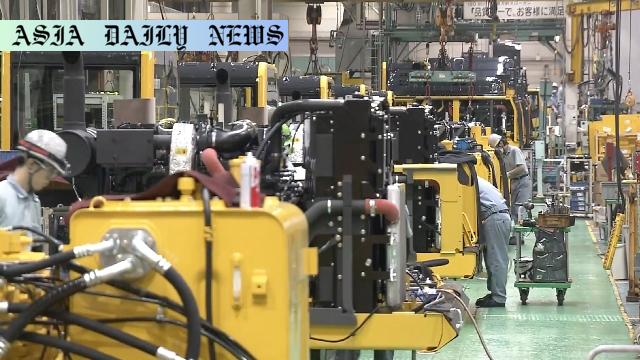Tariffs: Komatsu and Hitachi face significant profit declines due to US tariff policies affecting overseas manufacturing and imports.

Impact of US Tariffs on Japan’s Machinery Industry
The recent enforcement of US tariffs has sent ripple effects across global trade, particularly impacting Japanese construction machinery manufacturers. Major players such as Komatsu and Hitachi Construction Machinery are grappling with significant profit losses attributed to these policies. Komatsu, a leading manufacturer in the industry, revealed that its operating profit for the fiscal year ending March 2026 is projected to fall by more than 94 billion yen, roughly 655 million dollars. This dramatic decline underscores the profound challenges faced by companies heavily dependent on international markets, specifically the US.
While tariffs have led to an increase in import costs for machinery and parts, Komatsu’s reliance on overseas manufacturing has escalated its vulnerability. Nearly 50% of Komatsu’s products sold in the United States are manufactured abroad, leading to heightened costs and sharp declines in sales revenue. To mitigate these challenges, Komatsu is exploring alternatives such as redirecting exports from Japan to other regions, bypassing the US entirely. This strategic adjustment highlights the broader efforts of Japanese manufacturers to adapt to the evolving trade policies under the Trump administration.
Declining Operational Profits and Business Adjustments
Komatsu’s estimated 8.8% decline in sales translates to a staggering drop from 3.75 trillion yen to about 26 billion dollars. Furthermore, its forecasted 27.3% dip in operational profit—down to 478 billion yen—showcases the severe financial strain imposed by the tariffs. Similarly, Hitachi Construction Machinery finds itself in a similar predicament, projecting a 30 billion yen reduction in profits attributed to heightened costs associated with its US operations.
It’s worth noting that these firms have a considerable dependency on the North American market. For Hitachi, the US and North American division accounted for nearly 23% of its total sales in fiscal 2024. Both companies are under mounting pressure to re-evaluate their strategies and supply chains. Komatsu’s CEO, Imayoshi Takuya, expressed a determined focus on altering the supply source of products in the medium to long term to better manage risks associated with such disruptive tariff policies. The broader implications of these measures could extend far beyond immediate profit reductions, potentially altering their go-to-market strategies, production hubs, and global footprint.
Mitsubishi Electric’s Similar Encounter
In tandem with the construction machinery industry, Japanese electronics leader Mitsubishi Electric has also reported challenges stemming from US tariff measures. The company foresees its operating profit taking a 30 billion yen hit in the current fiscal year, akin to Hitachi’s projections. These struggles across diverse sectors signify a broader trend of Japanese dependency on US markets being tested by escalating trade restrictions.
As leaders in technology and heavy machinery, these Japanese companies are now at a crossroads. Both Komatsu and Hitachi will need to innovate and potentially explore untapped regional markets to mitigate losses. The medium- to long-term repercussions of these adjustments might encourage significant shifts in global trade flows, necessitating resilience and adaptation from impacted firms.
Global Trade Dynamics and Japan’s Economic Strategy
The evolving trade dynamics set against the backdrop of US tariff policies present a cautionary tale for other export-reliant economies. Japan has long been hailed as a manufacturing powerhouse, but these challenges lay bare the vulnerabilities inherent in relying heavily on established trade partners. Tariff-triggered constraints have exposed the need for diversification, not only in markets but in production hubs and supply chains as well.
Looking ahead, companies like Komatsu and Hitachi will need to revisit their operational roadmaps. While immediate loss mitigation strategies, such as bypassing the US or reducing reliance on imports, can provide relief, the long-term answer might lie in innovative manufacturing solutions and deeper penetration into emerging markets. As Japan continues to navigate these challenges, it sets an example of resilience and adaptability for other nations and industries facing similar trade uncertainties.
Commentary
Reflections on the Global Impact of US Tariffs
The imposition of US tariffs has undoubtedly reshaped the landscape of international trade, serving as a stark reminder of the interconnectedness of global economies. For prominent Japanese machinery makers like Komatsu and Hitachi, the impact has been nothing short of monumental. These firms, which have long been paragons of industrial success, are now grappling with the tangible consequences of policy decisions made thousands of miles away. The estimated billions in profit reductions underline the sweeping changes that protectionist measures can impose, particularly on industries reliant on cross-border supply chains.
Strategic Adjustments for a Changing World
What’s fascinating about this situation is how it calls into question the traditional approaches to manufacturing and export. Komatsu’s strategy to shift supply routes and potentially bypass the US is an intelligent, albeit reactive, measure against an immediate threat. However, it also points to a broader trend—businesses are beginning to realize the importance of diversification, not just in markets but also in the geography of production. This may prompt other nations and industries to reevaluate their reliance on single markets, particularly ones prone to abrupt policy changes.
A Broader Lesson in Economic Resilience
Beyond the challenges faced by individual companies, this situation speaks to the resilience of industries in the face of adversity. Japan’s industrial sector, known for its innovation and quality, is now at a turning point. The move towards adaptation and strategic thinking is commendable and perhaps sets a precedent for how global firms might navigate the unpredictability of modern trade policies. The global economy thrives on collaboration and mutual benefit, and while tariffs may bring short-term relief to specific sectors, they may inadvertently stymie larger growth prospects.
As companies like Komatsu and Hitachi gradually pivot to new strategies, the world watches to see how Japan’s industrial giants will weather this storm. Their ability to adapt will likely serve as a blueprint for others navigating the complexities of global trade in an increasingly protectionist environment.


